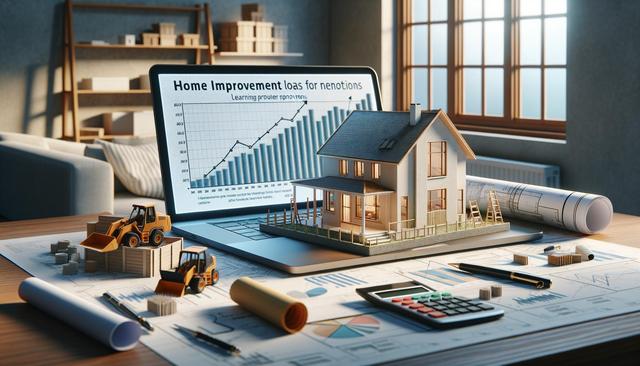
Understanding Home Improvement Loans for Smarter Renovations
What Are Home Improvement Loans?
Home improvement loans are financial tools that allow homeowners to borrow money specifically for upgrading, repairing, or enhancing their properties. These loans can take various forms, such as personal loans, home equity loans, or home equity lines of credit (HELOCs). The type you choose depends on your financial situation, the scope of your renovation, and your long-term repayment goals.
There are two main categories of home improvement loans:
- Secured loans: These require collateral, usually your home. Examples include home equity loans and HELOCs.
- Unsecured loans: These do not require collateral and are typically offered as personal loans.
Each type has its pros and cons. Secured loans often come with lower interest rates but may pose a higher risk if you are unable to repay. Unsecured loans, while more flexible, usually carry higher rates and shorter repayment terms. It’s important to understand your financial limits and renovation needs before choosing a loan type.
Evaluating Your Renovation Goals and Budget
Before applying for a loan, clearly defining your renovation objectives is essential. Are you remodeling a kitchen, adding a new room, or addressing necessary repairs like roofing or plumbing? Each goal will influence how much funding you need and how quickly you’ll need it.
Create a detailed budget that includes:
- Material and labor costs
- Permit fees
- Unexpected expenses or contingency funds
- Estimated timeline for project completion
Having a well-prepared budget not only helps you determine the loan amount you need but also strengthens your application by showing lenders that you’ve planned carefully. Lenders are more inclined to approve loans when applicants demonstrate financial responsibility and realistic expectations for their renovations.
Types of Home Improvement Loans Available
There are several loan options available to homeowners, each with unique features and qualifications. Understanding what’s available can help you make an informed decision:
- Personal Loans: These are unsecured loans that can be used for various purposes, including home improvements. They typically have fixed rates and terms.
- Home Equity Loans: These loans allow you to borrow against the equity in your home, often at lower interest rates than personal loans.
- HELOCs: A home equity line of credit works like a credit card secured by your home’s equity. You can borrow as needed, which offers flexibility for long-term projects.
- Cash-Out Refinance: This replaces your current mortgage with a new one, allowing you to take out the difference in cash to fund renovation projects.
Each option has different eligibility criteria, interest rates, and repayment schedules. It’s wise to compare these aspects before committing to a loan product.
Understanding Interest Rates and Repayment Terms
Interest rates can significantly impact how much you end up paying for your home improvement loan over time. Rates vary based on the type of loan, your credit score, income, and the lender’s policies. Generally, secured loans offer lower interest rates because they pose less risk to lenders.
Pay attention to the following when evaluating loan offers:
- APR (Annual Percentage Rate): This includes both the interest rate and any associated fees, giving you a comprehensive cost of borrowing.
- Loan Term: Shorter terms mean higher monthly payments but less interest paid overall. Longer terms lower your monthly payments but can increase total interest costs.
- Prepayment Penalties: Some lenders charge fees if you pay off your loan early. Check for these terms before signing.
Use online loan calculators to simulate different scenarios and find an option that aligns with your budget and timeline. Understanding these elements can help avoid financial strain and ensure your renovation remains a positive investment.
Tips for a Successful Loan Application
Securing approval for a home improvement loan involves preparation and attention to detail. Lenders evaluate your creditworthiness, income stability, and the value of your home when considering your application. Here are some steps to improve your chances of approval:
- Check your credit report and correct any errors
- Pay down existing debts to improve your debt-to-income ratio
- Gather necessary documents such as proof of income, property value, and renovation estimates
- Get pre-qualified with multiple lenders to compare offers
In addition, clearly communicating your renovation goals and showing how the loan will be used can make your application more compelling. Transparency and preparation can go a long way in getting the funds you need to improve your home.
Conclusion: Planning Ahead for a Smoother Renovation
Home improvement loans can be a practical solution for financing upgrades that enhance your living space and potentially increase your property’s value. Whether you’re planning a small remodel or a major overhaul, understanding your loan options, interest rates, and repayment terms is essential. By setting clear goals, budgeting carefully, and preparing thoroughly for your loan application, you can take confident steps toward a successful renovation project.


